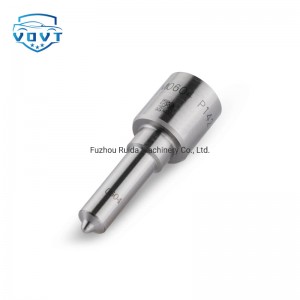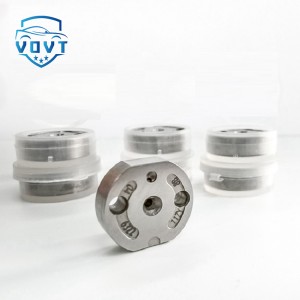Made in China New DieselCommon Rail Injector Nozzle DLLA155PN118 Fuel Nozzle for Diesel Engine
Products Description
| Reference. Codes | DLLA155PN118 |
| Application | / |
| MOQ | 10PCS |
| Certification | ISO9001 |
| Place of Origin | China |
| Packaging | Neutral packing |
| Quality Control | 100% tested before shipment |
| Lead time | 7~10 working days |
| Payment | T/T, L/C, Paypal, Western Union, MoneyGram or as your requirement |
Diesel Engine Fuel Injection Pump Failure
1. The plunger pair is severely worn due to long-term use, or the diesel is not clean, which accelerates the wear of the plunger pair, reduces the oil supply, reduces the injection pressure, and deteriorates the quality of the injector's oil atomization.
2. When disassembling the injection pump, the parts are not cleaned properly, and mechanical impurities are brought into the injection pump.
3. The plunger sleeve is not installed vertically in the pump body. After the plunger sleeve positioning screw is tightened, the plunger sleeve cannot move up and down. During operation, the oil pump plunger is stuck.
4. The oil outlet valve is worn or the oil outlet valve spring is broken, so that the oil outlet valve is not sealed tightly, the return oil is too much, and the oil supply of the injection pump is reduced.
5. The plunger spring is broken, or the plunger is stuck in the non-oil supply position, so that the oil pump does not supply oil.
6. There are impurities on the matching surface of the oil outlet valve seat and the plunger sleeve, and the seal is not tight. The oil outlet valve seat is loose, so that the oil outlet valve seat and the plunger sleeve are not sealed tightly, diesel leaks, injection pressure is reduced, fuel supply is reduced, and the injector atomization quality is poor.
7. The cam is severely worn, which delays the fuel supply time.
8. The governor lever and other parts are stuck, so that the oil pump plunger oil adjustment arm cannot be turned to the maximum fuel supply position.
The air brake valve tappet of the tractor is made of plastic, and its outer diameter and length are often easily affected by thermal expansion and contraction, which may change the air brake valve.
1. Cause of failure: When the outer diameter of the tappet increases, a jamming fault will occur in the air brake valve housing, causing the valve body assembly to fail to open, inhale, or deflate, or fail to return to the open position, fail to inflate, and have no air pressure; when the tappet length becomes shorter, the valve body assembly cannot be opened, inhale, or deflate.
2. Solution: When the outer diameter of the tappet increases and the length becomes longer, it can be lightly polished with fine sandpaper and then reassembled for a pull test until it meets the requirements; when the tappet becomes shorter, 1-2 ordinary flat gaskets with a thickness of 1-2mm and an outer diameter of about 18mm can be selected between the tappet head and the valve body assembly. Of course, to fundamentally solve the problem, it is necessary to improve the material and size accuracy of the tappet.























